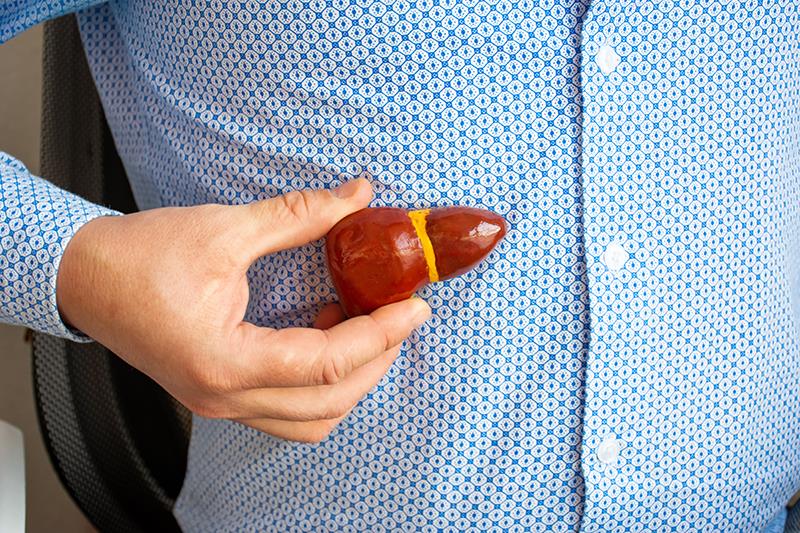Liver stiffness predicts decompensation, mortality in ALD patients





Clinicians may use liver stiffness measurement (LSM) by transient elastography (TE) to accurately predict decompensation and all-cause mortality in patients with compensated alcohol-related liver disease (ALD), suggests a study.
“In our observational cohort study of patients at risk of ALD with a median of 6 years of follow-up, we found that LSM using TE can be used to predict and monitor the risk of decompensation and all-cause mortality,” the researchers said.
The study included 536 compensated patients at risk of ALD (median age 57 years, baseline LSM 8.1 kPa) from Denmark and Austria and assessed the risk of decompensation and all-cause mortality, stratified for compensated advanced chronic liver disease (cACLD: baseline LSM ≥10 kPa) and LSM changes after a median of 2 years.
In cACLD patients, LCM changes was defined as LSM increase ≥20 percent (cACLD increasers) and follow-up LSM as <10 kPa or <20 kPa with LSM decrease ≥20 percent (cACLD decreasers). In those without cACLD, follow-up LSM ≥10 kPa was defined as an LSM increase (No cACLD increasers). The remaining patients were characterized as LSM stable.
Patients were followed for 3,008 patient-years, of whom 371 (69 percent) had follow-up LSM after a median of 25 months, 41 subsequently decompensated, and 55 died. A total of 125 patients had cACLD at baseline, of whom 14 percent were cACLD increasers and 43 percent cACLD decreasers, while 13 percent of those without cACLD were no cACLD increasers. [J Hepatol 2024;81:23-32]
LSM at baseline, during follow-up, and changes were all accurate in predicting decompensation (C-index: baseline LSM, 0.85; follow-up LSM, 0.89; LSM changes, 0.85) and mortality (C-index: baseline LSM, 0.74; follow-up LSM, 0.74; LSM changes, 0.70).
Furthermore, cACLD increasers showed a markedly lower decompensation-free survival and higher risks of decompensation (subdistribution hazard ratio, 4.39; p=0.004) and mortality (hazard ratio, 3.22; p=0.01) than cACLD decreasers.
“[O]ur results demonstrate that LSM using TE accurately predicts decompensation and all-cause mortality in patients at risk of ALD, and that LSM changes during follow-up provide further prognostic information,” the researchers said.
Lifestyle change
Of note, a greater number of patients with cACLD had decreasing instead of increasing LSMs. This finding is consistent with that from patients with nonalcoholic fatty liver disease (NAFLD), as shown in previous studies. [Hepatology 2022;77:268-274; Hepatology 2020;72:1230-1241]
“This observation suggests that disease awareness and timely diagnoses may promote lifestyle changes, as previously demonstrated for patients with ALD,” the researchers said. “However, these findings might also be impacted by selection and survivorship bias despite our high reparticipation rate of 69 percent.” [Br J Gen Pract 2013;63:e698-e705; Clin Gastroenterol Hepatol 2023;S1542-3565(23)01053-4]
As previously reported for NAFLD patients, researchers found no clear pattern of predictors for increasing and decreasing LSM values or decompensation. [Hepatology 2022;77:268-274]
“Diabetes and elevated liver blood test results predicted decompensation and LSM increase in patients without cACLD at baseline, but not LSM increase in cACLD,” the researchers said. “We also found no clear pattern of alcohol consumption predicting LSM changes possibly due to the fluctuating nature of drinking habits.” [J Hepatol 2023;78:501-512]
“Prospective studies, including systematic follow-up LSM, longitudinal evaluation of alcohol intake, and possibly other noninvasive markers are warranted to validate our findings and provide in-depth insight into optimal disease monitoring and prognostication in ALD,” the researchers said.